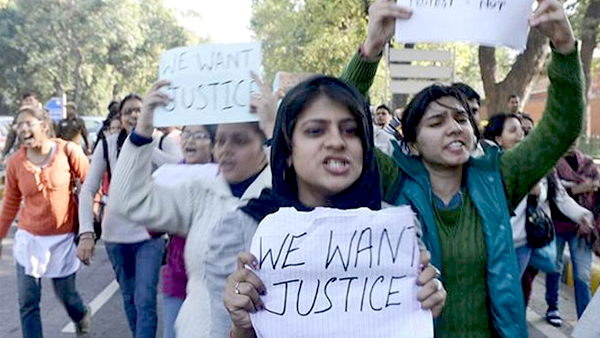
New Delhi, December 21: Hundreds of women and students demanding strong action against those involved in the brutal gang-rape of the 23-year-old woman, who battles for life in a hospital, Friday marched towards Raisina Hill in central Delhi.
Policemen outside the high-security Rashtrapati Bhavan were caught by surprise.
The protestors, shouting "We want justice," reached gate number two of Rashtrapati Bhavan, where they tried to stop the vehicle of a senior official at Rastrapathi Bhavan, demanding that they be allowed entry.
Policemen said the crowd attempted to force its way into the official residence of President Pranab Mukherjee, but was later diverted to India Gate.
Kanchan, one of the protestors, said: "They offer only an assurance; nothing is done."
The savage rape and torture occurred Sunday night, when the woman and her male friend boarded a private bus in south Delhi after watching a movie.
The woman, who cannot be named for legal reasons, was brutally assaulted by six men. Her male friend, who tried to save her, was also beaten up by the rapists.
Both victims were stripped and dumped by the roadside after some 40 minutes of ordeal near the domestic airport.





Comments
Add new comment